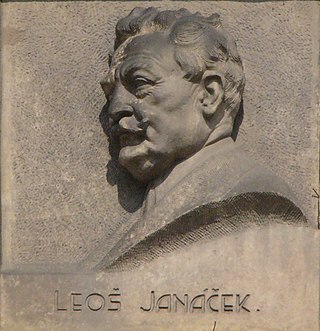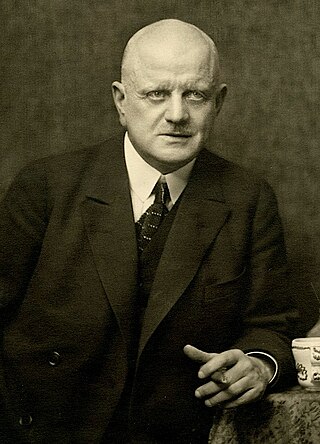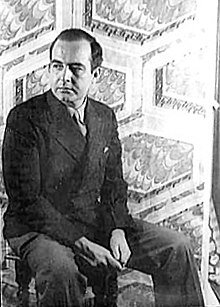
Samuel Osmond Barber II was an American composer, pianist, conductor, baritone, and music educator, and one of the most celebrated composers of the mid-20th century. Principally influenced by nine years' composition studies with Rosario Scalero at the Curtis Institute and more than 25 years' study with his uncle, the composer Sidney Homer, Barber's music usually eschewed the experimental trends of musical modernism in favor of traditional 19th-century harmonic language and formal structure embracing lyricism and emotional expression. However, he adopted elements of modernism after 1940 in some of his compositions, such as an increased use of dissonance and chromaticism in the Cello Concerto (1945) and Medea's Dance of Vengeance (1955); and the use of tonal ambiguity and a narrow use of serialism in his Piano Sonata (1949), Prayers of Kierkegaard (1954), and Nocturne (1959).

Arturo Toscanini was an Italian conductor. He was one of the most acclaimed and influential musicians of the late 19th and early 20th century, renowned for his intensity, his perfectionism, his ear for orchestral detail and sonority, and his eidetic memory. He was at various times the music director of La Scala in Milan and the New York Philharmonic. Later in his career, he was appointed the first music director of the NBC Symphony Orchestra (1937–1954), and this led to his becoming a household name, especially in the United States, through his radio and television broadcasts and many recordings of the operatic and symphonic repertoire.

A string orchestra is an orchestra consisting solely of a string section made up of the bowed strings used in Western Classical music. The instruments of such an orchestra are most often the following: the violin, which is divided into first and second violin players, the viola, the cello, and usually, but not always, the double bass.

William Howard Schuman was an American composer and arts administrator.

Great Mass in C minor, K. 427/417a, is the common name of the musical setting of the mass by Wolfgang Amadeus Mozart, which is considered one of his greatest works. He composed it in Vienna in 1782 and 1783, after his marriage, when he moved to Vienna from Salzburg. The large-scale work, a missa solemnis, is scored for two soprano soloists, a tenor and a bass, double chorus and large orchestra. It remained unfinished, missing large portions of the Credo and the complete Agnus Dei.

The Glagolitic Mass is a composition for soloists, double chorus, organ and orchestra by Leoš Janáček. Janáček completed the work in 1926. It received its premiere by the Brno Arts Society, conducted by Jaroslav Kvapil, in Brno on 5 December 1927. Janáček revised the mass the next year.
The Piano Concerto, Op. 38, by Samuel Barber was commissioned by the music publishing company G. Schirmer in honor of the centenary of their founding. The premiere was on September 24, 1962, in the opening festivities of Philharmonic Hall, now David Geffen Hall, the first hall built at Lincoln Center in Manhattan, with John Browning as soloist with the Boston Symphony Orchestra conducted by Erich Leinsdorf.

Symphony No. 2 in D major, Op. 73, was composed by Johannes Brahms in the summer of 1877, during a visit to Pörtschach am Wörthersee, a town in the Austrian province of Carinthia. Its composition was brief in comparison with the 21 years it took Brahms to complete his First Symphony.
(James) Frederick Stocken is a British classical composer, organist and musicologist.
Roman Festivals, P 157 is a tone poem in four movements for orchestra completed in 1928 by the Italian composer Ottorino Respighi. It is the last of his three tone poems about Rome, following Fountains of Rome (1916) and Pines of Rome (1924), which he referred to as a triptych. Each movement depicts a scene of celebration in ancient and contemporary Rome, specifically gladiators battling to the death, the Christian Jubilee, a harvest and hunt festival, and a festival in the Piazza Navona. Musically, the piece is the longest and most demanding of Respighi's Roman trilogy.

Andante festivo, JS 34a–b, is a single-movement chamber work for two violins, viola, and cello written in 1922 by the Finnish composer Jean Sibelius. In 1938, the composer arranged the piece for string orchestra and timpani. On 1 January 1939, Sibelius conducted this version of Andante festivo during a live, worldwide broadcast, making it the only sound document of him interpreting his own music.

Agnus Dei(Lamb of God) is a choral composition in one movement by Samuel Barber, his own arrangement of his Adagio for Strings (1936). In 1967, he set the Latin words of the liturgical Agnus Dei, a part of the Mass, for mixed chorus with optional organ or piano accompaniment. The music, in B-flat minor, has a duration of about eight minutes.
The Symphony No. 3 in A minor, Op. 44, is a three-movement composition for orchestra written from 1935 to 1936 by the Russian composer Sergei Rachmaninoff. The Third Symphony is considered a transitional work in Rachmaninoff's output. In melodic outline and rhythm it is his most expressively Russian symphony, particularly in the dance rhythms of the finale. What was groundbreaking in this symphony was its greater economy of utterance compared to its two predecessors. This sparer style, first apparent in the Rhapsody on a Theme of Paganini, enhances the emotional power of the work.

Anne Akiko Meyers is an American violinist. She has been called “the Wonder Woman of commissioning” by The Strad.
Capricorn Concerto, Op. 21, is a composition for flute, oboe, trumpet, and strings by Samuel Barber, completed on September 8, 1944. A typical performance lasts approximately 14 minutes.
Samuel Barber's Symphony in One Movement (Op. 9) was completed 24 February 1936. It was premiered by Rome's Philharmonic Augusteo Orchestra under the baton of Bernardino Molinari on 13 December 1936. It lasts around 21 minutes. The title given in the printed score of the work is First Symphony (in One Movement), and the uniform title is Symphonies, no. 1, op. 9.
Samuel Barber's Essay for Orchestra, Op. 12, completed in the first half of 1938, is an orchestral work in one movement. It was given its first performance by Arturo Toscanini with the NBC Symphony Orchestra on November 5, 1938 in New York in a radio broadcast concert in which the composer's Adagio for Strings saw its first performance. It lasts around 8 minutes and is dedicated "To C.E." The essay is now known as the First Essay for Orchestra after Barber wrote his Second Essay for Orchestra in 1942. He also wrote a Third Essay in 1978.
Tison C. Street aka Curry Tison Street is a graduate of Harvard College ‘65 and an American composer of contemporary classical music and violinist.
The Symphony No. 2 in D-flat major, Opus 30, W45, "Romantic", was written by Howard Hanson on commission from Serge Koussevitzky for the 50th anniversary of the Boston Symphony Orchestra in 1930, and published by Carl Fischer Music.
Symphony No. 2, Op. 19 is a three-movement work for orchestra by the American composer Samuel Barber. The 25-minute work was originally written in 1944. The work underwent many revisions and was finally published in 1950. The original manuscript was withdrawn by Barber in 1964. He ordered that G. Schirmer destroy the original manuscript and all scores in their library. The work remained unpublished for many years until 1984 when a set of parts turned up in a warehouse in England. Renewed interest in Barber's work led to a 1990 reprint of the 1950 edition.










